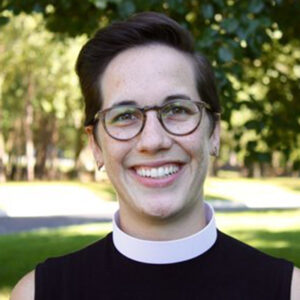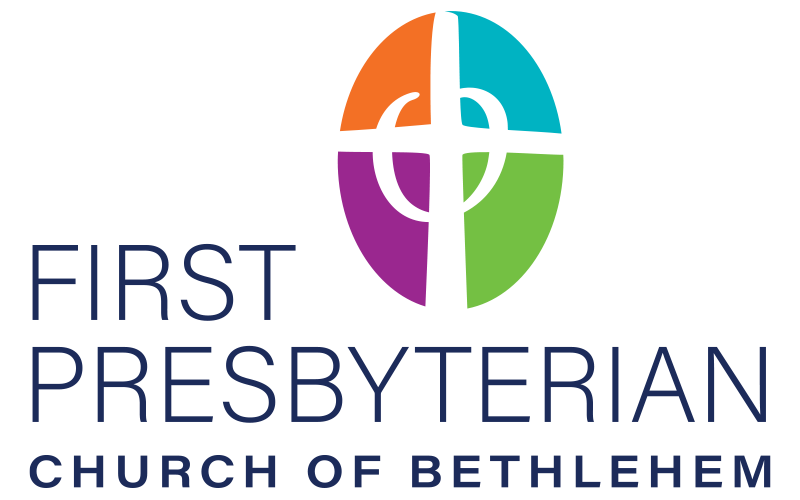Let’s start with a pop quiz – what do you remember of the sermon series we’re doing. What the Great Ends we’ve discussed?
F-1.0304 The Great Ends of the Church
- the proclamation of the gospel for the salvation of humankind;
- the shelter, nurture, and spiritual fellowship of the children of God;
- the maintenance of divine worship;
- the preservation of the truth;
- the promotion of social righteousness; and
- the exhibition of the Kingdom of Heaven to the world.
______
Social righteousness… This is an interesting phrase or word pair to me; I wonder what bubbles up for you when you hear it? Ideas? Synonyms? Connections?
Having spent my childhood in a Southern Baptist  church with my dad’s family, I’ve heard plenty about personal righteousness, but it wasn’t until much later (middle/high school) that I encountered today’s text and the idea of social righteousness when my mom’s family joined a Lutheran church. (Those pesky Lutherans…). I’ll share more of that story shortly, but let’s zoom out a bit from today’s text to get a lay of the land.
church with my dad’s family, I’ve heard plenty about personal righteousness, but it wasn’t until much later (middle/high school) that I encountered today’s text and the idea of social righteousness when my mom’s family joined a Lutheran church. (Those pesky Lutherans…). I’ll share more of that story shortly, but let’s zoom out a bit from today’s text to get a lay of the land.
During the 8th century BCE, the Assyrian Empire threatened the Northern Kingdom, and Amos, a southern prophet, links divine punishment to their mistreatment of the vulnerable. This is the kind of passage that reminds me that prophets have a different vocational calling than pastors.
The imagery here is intense, intended to shake the hearers to their core. According to Amos, God is so angry with Israel’s trampling of the poor and pushing aside of the needy, that God refuses to acknowledge their worship. It is nearly a full-sensory refusal: God will not look on the worship, will not smell the offering, will not hear the songs. Why? Because that worship is empty and meaningless if it isn’t aligned with Israel’s actions and day-to-day life in community.
But perhaps there is still time for realignment; alongside the condemnation, Amos also seems to call the community to a new way of being:
Seek good and not evil,
that you may live,
and so the Lord, the God of hosts, will be with you,
just as you have said.
Hate evil and love good,
and establish justice in the gate.
“The gate” we hear about a few times in this passage refers to the city gate. As on scholar helpfully clarifies, “it is an entry point that was a central gathering area in any ancient walled city,” and a place with multiple purposes: “one function of ancient city gates was their role as courthouse. Elders would meet as a judicial council to settle disputes brought by residents…This was also where those in need could seek assistance, comparable to a contemporary state social services agency where someone could go to request help with housing or food (Lisa Wolfe, Working Preacher).
According to Amos, nothing good is currently happening at the gate and in community. Instead, Israel is taxing the poor (v.11), taking bribes, and rejecting the needy (v.12). This is what has provoked God’s deep anger. So the pair of lines at the end of this passage are part threat and part promise.
But let justice roll down like water
and righteousness like an ever-flowing stream.
If Israel refuses to live in community according to God’s will, God’s justice and righteousness will prevail…perhaps with destruction for those who stand in its way, a pent-up deluge or a dam about to burst. But we often choose to side-step that uncomfortable truth in favor of hearing these words as a call to people of faith to BE the justice-waters rolling down and the ever-flowing righteousness in the world.
Either way, a key takeaway for us today is the synonymous pair of justice/righteousness; they occur so frequently together in scripture that one word connotes the other. “Ensuring an equitable society has everything to do with right living, and vice versa” (Lisa Wolfe, Working Preacher).
To promote “social righteousness” then, effectively means to promote “social justice.” It is not some abstract, out-lying “woke” interpretation of our faith tradition, but rather it is central enough to be one of the six great ends of the church; one of the core ministries we should be focused on as a congregation. Alongside Israel, we are accountable to God for meeting this mark or failing it; we cannot simply worship without practicing our faith in public life. The values we proclaim through our liturgy should also be in alignment with how people are being treated at the gate, in our community.
But I do think there’s some helpful distinction between justice an righteousness which might help us peel back the layers of today’s great end of the church a bit more. One preacher offers this delineation: “Justice refers to fairness, attention to the needs of the poor, an end to oppression, a legal system that protects the rights of all people. Righteousness connotes healthy relationships, a sense of commonality, a recognition of God as the one who has formed the people into a community, a respect for the bonds among the people” (Working Preacher, Charles L. Aaron, Jr.).
A sense of commonality; a respect for the bonds among the people. All people, I might add.
And this is where those pesky Lutheran come back in. Pastor Suzanne has mentioned this before, but every three years, the ELCA gathers its high schoolers for the National Youth Gathering. In just a month’s time, more than 30,000 youth and their chaperones will descend on New Orleans for five days of worship, fellowship, learning, and service. More than 20 years ago now, my mom and I drove down to Atlanta with a few of my youth group friends for the National Youth Gathering. The theme was “Do life! Ubuntu!” As we would learn, ubuntu is a Zulu word, but more importantly, I think, it is a life philosophy, even a core theology. Translated, it means something like “I am because you are.” Or sometimes, “I am because WE are.”
Archbishop Desmond Tutu has taught and written a great deal about ubuntu, and I invite you to hear his words:
“[Indigenous Peoples] teach us that the first law of our being is that we are set in a delicate network of interdependence with our fellow human beings and with the rest of creation. In Africa recognition of our interdependence is called ubuntu. It is the essence of being human. It speaks of the fact that my humanity is caught up and is inextricably bound up in yours. I am human because I belong to the whole, to the community, to the tribe, to the nation, to the earth.
“Ubuntu is about wholeness, about compassion for life… Ubuntu has to do with the very essence of what it means to be human, to know that you are bound up with others in the bundle of life. In our fragile and crowded world we can survive only together. We can be truly free, ultimately, only together. We can be human only together.” (Desmond Tutu, forward: Dignity: In Honor of the Rights of Indigenous People).
This seems to me to be the core of social righteousness. Living from a place that centers the common good and the needs of all. Living from the well of the waters of justice and the ever-flowing stream of righteousness quenching every thirst. Each night of the National Youth Gathering, we sand a song from this verse of Amos, and it has stayed with me all these years. (We’ll actually hear it for the offertory.)
As I’ve reflected on this verse this week, it seems like no small coincidence to me that the stories of our faith tradition also begin and end with rivers—from the garden in Genesis to the garden in Revelation. In a similar way, we are people who, in body and spirit, are made from earth-dust and wind-breath and will return to earth-dust and wind-breath. There is no untangling ourselves from the stories or substance of the land and waters of creation surrounding us; we are part and parcel of it all.
The indigenous Māori tribe of New Zealand have a famous saying which says in English, “The river flows from the mountain to the sea. I am the river. The river is me.”
There is an image that seems to capture this idea; it’s a map that visualizes 250,000 streams and rivers running through the U.S. They are colored based on the direction of flow; zoomed out and to the naked eye, there are about three distinct colors, but in reality, there are 18 colors used, representing points around the compass. At a high level view, the distinct tones and hues blend together in a dynamic, pulsing image.
But a bit closer in, the streams and rivers remind me of the lines crisscrossing our palms and fingers. Perhaps that might be a visual, embodied reminder for us of our connection with the waters that are the circulatory system of the land. The river is me. The river is you. The river is all of us together. Our bodies are more than 50% water after all. Friends, all flourishing is mutual.
Amos knows that and invites us to offer our lives and ministries (individually and together) as radical incarnational and embodied testimony both at the Lord’s Table and in the public square. Ubuntu; I am because we are. And we are because Christ is.
But let justice roll down like water
and righteousness like an ever-flowing stream.
May we be bold enough to take this call to social righteousness seriously, my friends. Knowing that God will bring it bear with or without us, so where and how do we want to be part of that story. May we be faithful to this call each day. Amen.
